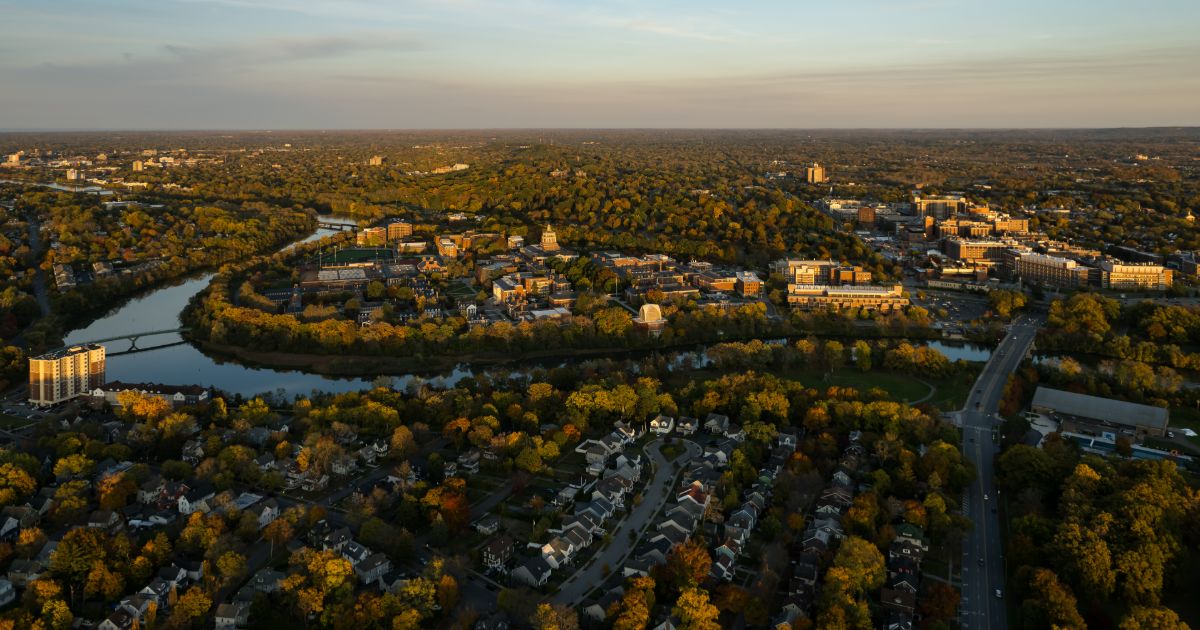Building the future
A key component in the University’s strategic plan, Boundless Possibility, is the development of an “institutional master plan,” which will play a pivotal role in shaping the future growth and development of our campuses. This bold initiative will engage a broad range of voices from across our University community, fostering a collaborative and inclusive approach to planning.
We reached out to Elizabeth Milavec, the institution’s first executive vice president of administration and finance, CFO, and treasurer, who shared her insights about the significance of this initiative and how it aligns with University’s strategic plan.
What is an institutional master plan?
At any university there should be a strong relationship between mission and physical environment. You can think of the University’s strategic plan and master plan as two sides of the same coin. At the heart of every plan is a long-term commitment to make decisions about the University’s physical environment that are mindful of how the University will deliver on its strategic plan.
When was the last plan completed, and why do we need a new one?
The last plan was completed in 2008. A lot has changed since then, including our size. University-owned properties and land today encompasses more than 12 million gross square feet of building space and more than 700 acres. Launching a planning process now not only allows for alignment with the strategic plan and our current footprint, but it also provides an opportunity to work closely with government agencies to plan for future development. The University’s main campus is subject to institutional zoning, which requires up-to-date plans with both the City of Rochester and the Town of Brighton.
What parts of campus will be addressed during this process?
The plan will include the River Campus, Medical Center, South Campus, Eastman School of Music, the new Ambulatory Orthopaedic Center, and the Memorial Art Gallery, and it covers critical areas such as our academic and research spaces, housing, clinical facilities, transportation, parking, services, sustainability, branding, and more. It’s an opportunity to look at our needs holistically.
I’ll give you an example from a financial perspective. If you are renovating space or developing a new building, it’s critical to look at the soundness of the investment. But if you only look at cost per square foot, you are going to miss other benefits that the investment might hold. For example, are there sustainability-related benefits that can come from the project? Will it address future growth? Does it enhance the identity of the University or student life? This is a simplistic example, but the point is when you take a holistic, long-term view of campus needs (open spaces, mobility, community engagement, diversity and inclusion, etc.), you can truly make progress toward your goals.
Who will have the opportunity to provide their input on the plan?
Plans should never be made in isolation; it takes many voices! Input will come from a variety of groups within the University community. We’ll be talking to the University community-at-large, including trustees, faculty, students, staff, and alumni as well as leaders from the City of Rochester, and local communities.
The process will include working groups consisting of faculty, students, and staff, who will provide input directly to the project team; an advisory committee that will provide guidance to the working groups while closely collaborating with the project team; and an executive steering committee made up of senior leadership who will serve as a liaison to the Board of Trustees and provide direction to the project team.
When will the plan be completed?
We anticipate the entire project to last about 18 months, making sure to provide many updates along the way. The end product will be a written, comprehensive plan that can be used as a readily accessible guide and visual reference for many aspects of project for the entire University community. But in reality, the planning process never ends. It’s a dynamic process that will help the University stay in front of growth and ensure that we continually make decisions about our campuses within the context of the strategic plan.
goal addressed
Related updates
Discover how Rochester’s master plan aligns campus development with strategic goals, repurposes Intercampus Drive, and engages community.
Dive into a candid discussion on dynamic tactics and leadership shifts driving the University’s strategic plan—with transparency fueling progress.
Shaun Nelms pushes boundaries and challenges norms, forging innovative community partnerships to drive bold, lasting change.









